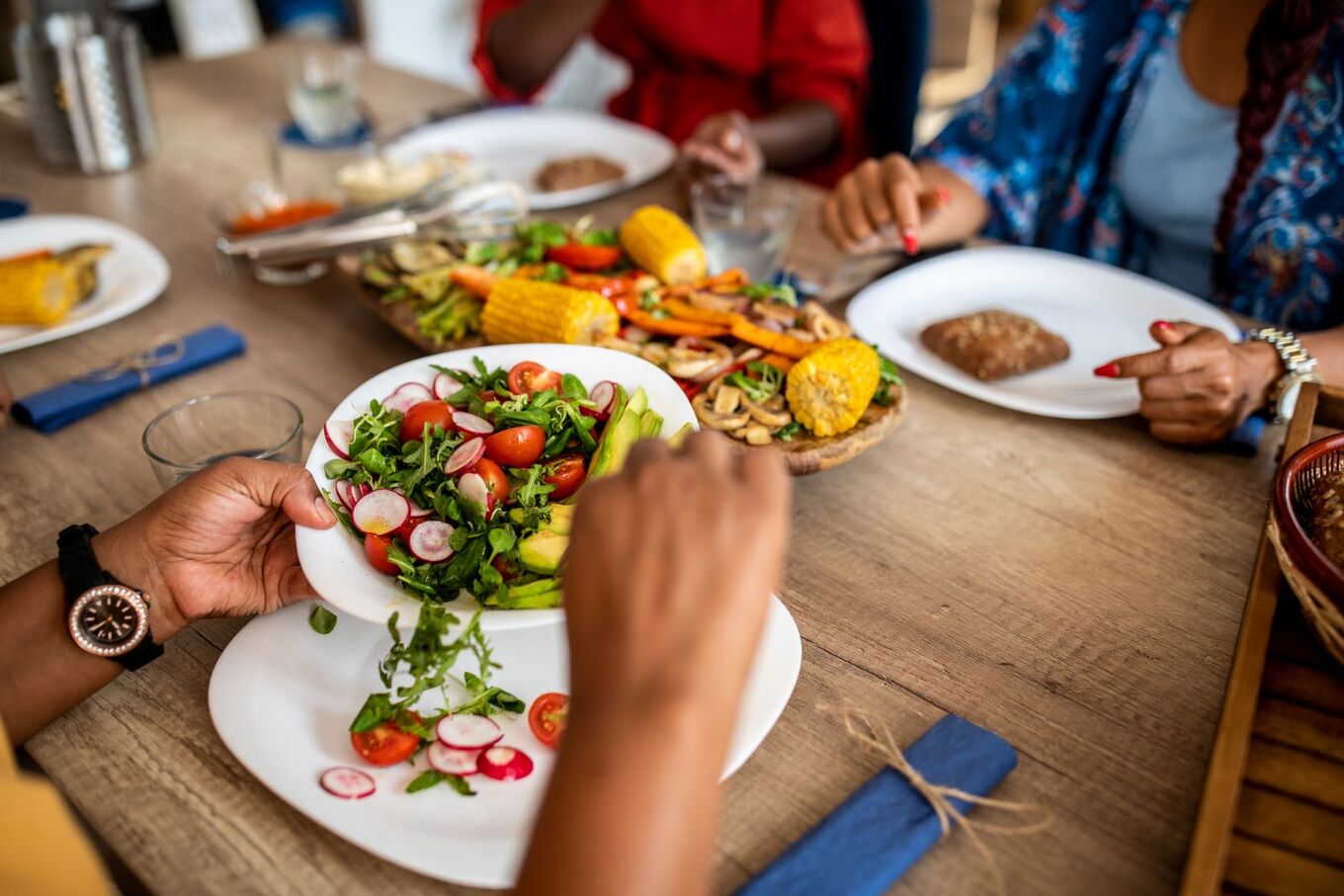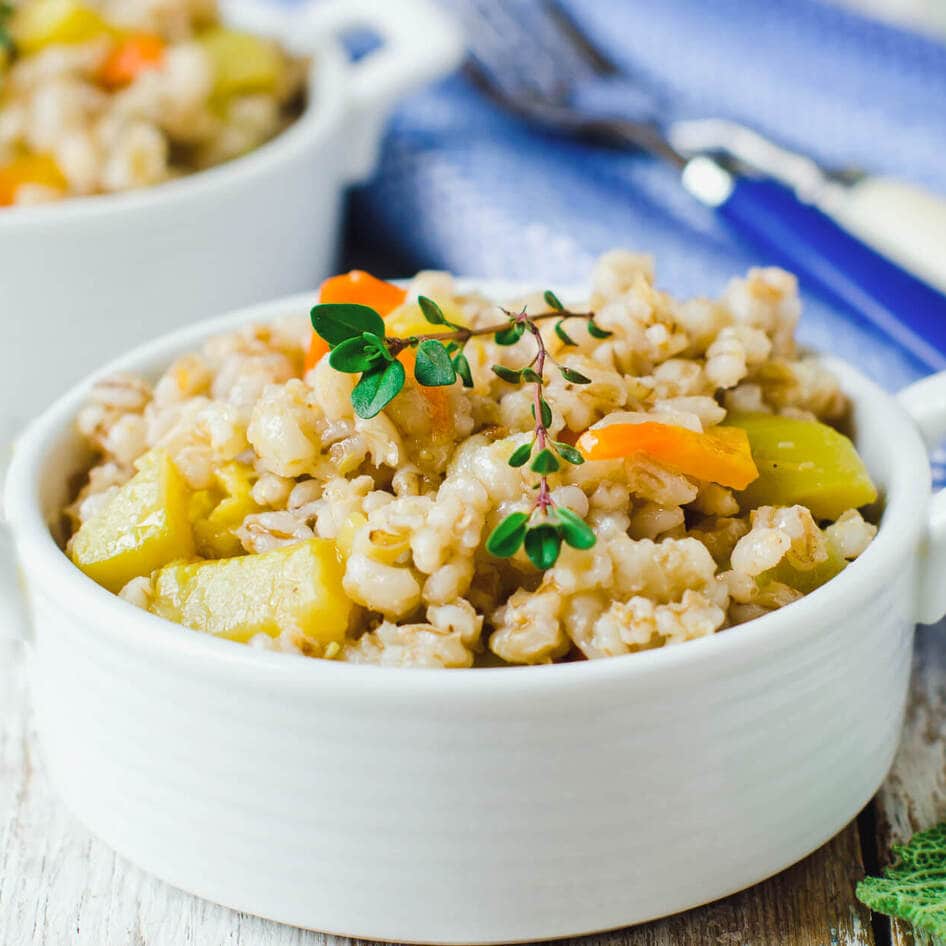Have you ever wondered why your energy crashes shortly after eating a doughnut? Or why fibrous plant foods keep us full and regular? It turns out, what you feed your gut—or, the trillions of microbes that live there—very much matters in terms of overall health.
This topic is more deeply explored in Hack Your Health: The Secrets of Your Gut, a new documentary that delves into the fascinating world of gut health, revealing the crucial role of the gut microbiome.
 Getty
Getty
One of the standout recommendations from this Netflix documentary is to consume 20 to 30 different types of plants each week to promote a diverse and healthy gut microbiome.
To better understand exactly how to feed our gut microbiomes, we reached out to six nutritionists for their expert advice on the best plants to include in your diet and practical tips on how to achieve this goal.
How to hack your gut health
The gut acts like a second brain, using the food we eat to fuel not just our bodies but also our mental well-being, Kristie Leigh, a RDN and director of health and scientific affairs at Danone North America, explains.
“Research suggests that the trillions of microbes and their genes living in our gut, collectively known as our gut microbiome, can impact everything from our digestive health to our immune system, and, because of the gut-brain connection, it can even impact aspects of our mental well-being,” Leigh tells VegNews.
Leigh and the other nutritionists agree that eating a wide variety of plants is essential for fostering a healthy gut microbiome—and fiber is key.
“Plants are especially high in one essential macronutrient that plays an essential role in gut health: dietary fiber,” Catherine Rall, a Certified Nutritionist at Happy V, tells VegNews.
“Fiber helps to keep food moving through your digestive system at a steady pace and also provides nutrients for beneficial gut bacteria,” Rall says.
Despite how important this macronutrient is to overall health, many consumers are not eating enough of it. While the FDA recommends we consume 28 to 40 grams of fiber per day, the average American only eats approximately 15 grams of the nutrient daily. To achieve optimal gut health, scientists recommend an even higher 50 grams of fiber per day.
 Getty
Getty
The best way to get a high amount of fiber in your diet? Eat a wide variety of plants at every meal for maximum benefits.
“A diverse diet rich in fiber has consistently been found to support a healthy gut microbial community, thereby promoting a balanced ecosystem of good bacteria,” Akanksha Kulkarni, Medical Expert at Prowise Healthcare, tells VegNews.
Recommended plants for a healthy gut microbiome
Hack Your Health gave a certain smoothie recipe a big chunk of air time. That’s because it contained a shocking mix of 60 different fruits, vegetables, and herbs designed to deliver a wide range of nutrients for a healthy gut.
While good in theory, this extra thick smoothie—which contains everything from Brussels sprouts to Russet potatoes to persimmons—is not feasible (or palatable) to many. So how does one go about consuming 20 to 30 plants per week?
Nutritionists recommend breaking them down into groups and combining a few different plants for every meal to set yourself up for success.
 Elias Morr/Unsplash
Elias Morr/Unsplash
1 Vegetables
Leafy greens are a staple in a gut-friendly diet. Krutika Nanavati, a Registered Nutritionist and Dietician with the Nutrition Society New Zealand, recommends leafy greens such as spinach, kale, and Swiss chard for their high fiber and vitamin content.
Cruciferous vegetables like broccoli, cauliflower, and Brussels sprouts are also highly beneficial, as these vegetables, Nanavati explains, are rich in fiber and antioxidants, which support the body’s detoxification processes.
Yasmin Ribeiro, an RDN at nutrition company Magic Scoop, also suggests including colorful vegetables such as red peppers and purple cabbage to cover a wide spectrum of phytonutrients.
Kulkarni adds that leafy herbs such as cilantro, basil, mint, and parsley can be used to add diversity and a hit of flavor to meals.
 Pexels
Pexels
2 Fruit
Berries are a fantastic choice to reach your produce intake due to their high antioxidant and fiber content. Nanavati recommends blueberries, raspberries, and strawberries, adding that apples and pears are a great source of pectin, a prebiotic fiber that supports healthy bacteria.
“A green apple and a red apple have different compounds that feed different bacteria, so variety is crucial,” Greenfield adds.
 Ella Olsson/PexelsCup of Couple/Pexels
Ella Olsson/PexelsCup of Couple/Pexels
3 Legumes and pulses
Legumes and pulses are another excellent source of fiber and protein. Ribeiro advises incorporating lentils, chickpeas, and black beans into your diet.
Leigh points to soy as a top legume to try for both its versatility and health benefits. “Soy is one of my absolute favorite plant foods because it’s extremely versatile and is what’s known as a complete protein,” she says.
“That means that, unlike many other plant-based foods, it delivers all nine of the essential amino acids, or protein building blocks, that our bodies can’t make on their own and need to get from food,” Leigh says.
She suggests using tofu in simple preparations and soy milk and soy milk yogurt as bases for smoothies and oatmeal.
 Ella Olsson
Ella Olsson
4 Whole grains
White bread verses whole grain: is there really a difference? When it comes to gut health, whole grains are superior.
Ribeiro emphasizes choosing whole grains—such as quinoa, barley, and farro—over refined grains for their added fiber and nutrient content.
Sarah Greenfield, a Registered Dietitian and owner of gut health company Fearless Fig, points out that different types of rice—such as red, brown, black, and white—contain various compounds that feed different bacteria.
 Getty
Getty
5 Nuts and seeds
Nuts and seeds provide essential fats and additional fiber. The nutritionists all recommend including flax seeds, chia seeds, walnuts, almonds, and pumpkin seeds, all of which are beneficial for gut health.
To add more nuts and seeds to your diet, Greenfield suggests throwing a few into a fruit smoothie and giving it a whirl.
 kristina Snowasp/Pexels
kristina Snowasp/Pexels
6 Fermented foods
Fermented foods such as sauerkraut, tempeh, and kimchi offer probiotics, which are beneficial for feeding a healthy microbiome. Drinking kombucha and using miso as a seasoning, Rall says, also come with gut-healthy benefits.
Practical tips for incorporating plant diversity
Nutrition professionals agree that with a little planning and preparation, adding 20 to 30 (or more) of these plants to your diet is simple. Here are their top tips:
 Getty
Getty
1 Plan meals around plants
If you don’t already follow a fully plant-based diet, consider planning meals around plant-based foods as a practical way to ensure you’re consuming a diverse range of plants.
“Plan meals around plant-based foods, aiming for various colors and types to ensure nutrient diversity,” Nanavati says. “Include a vegetable or fruit at every meal, and use legumes and whole grains as staple foods.”
 Getty
Getty
2 Snack smart
Instead of sticking to one handful of almonds every day, try snacking on a variety of whole foods from nuts and seeds to vegetable sticks and dips, all of which further diversify your diet outside of meal times.
“The more diverse your diet, the more diverse your gut,” Greenfield says. “Generally, gut bacteria feed off various food compounds, like phytonutrients, fibers, resistant starches, and sugars. Foods contain various compounds that all interact with bacteria in unique ways.”
While it is true that certain foods correlate to feeding certain gut bacteria, a holistic approach is important. “Instead of isolating every compound and trying to eat them individually, food gives us the best opportunity to get a variety of bacteria-friendly compounds,” Greenfield says.
 Getty
Getty
3 Experiment with cooking
Experimenting with different cooking methods can enhance flavor and nutrient absorption. Nanavati recommends steaming, roasting, and fermenting vegetables, as well as incorporating a wide range of herbs and spices for additional flavor and health benefits.
Greenfield, who aims to eat 40 different whole foods weekly, suggests making stews, soups, and stir-fries to get more plant-based foods into your diet.
“If you have access to a farmers’ market, see if you can find three to five new foods that you haven’t eaten before and add those to your diet,” Greenfield suggests.
Her favorite finds? Cara cara oranges, sunchokes, green lettuce mixes with edible flowers, and trumpet mushrooms.
“By thoughtfully incorporating a myriad of plant-based foods into your diet, you’re not just eating for one; you’re nourishing trillions of beneficial microbes that, in return, look after your health,” Ribeiro adds.
For more plant-based stories like this, read:
JUMP TO ... Latest News | Recipes | Guides | Health | Shop









